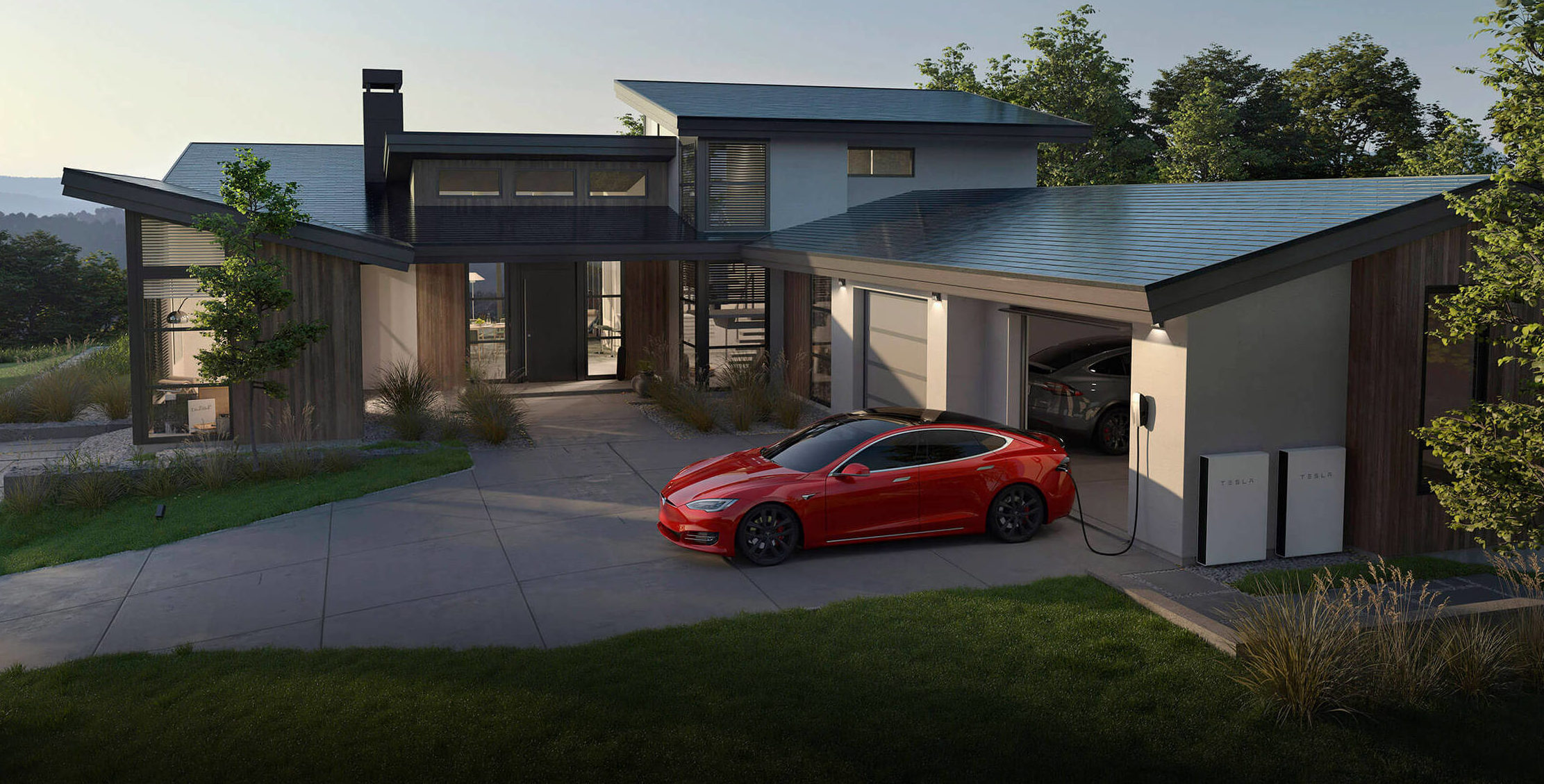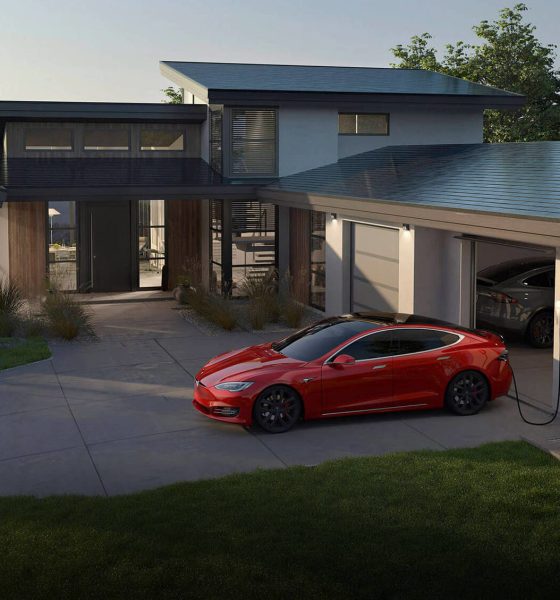

Lifestyle
Each step of Elon Musk’s first Tesla Master Plan visualized in concept video
Back in 2006, Elon Musk discreetly published his first Master Plan for Tesla, a company was then pushing hard to create its first vehicle, the original Tesla Roadster. The plan was ambitious, and it forecasted massive growth for the small, upstart carmaker. It was, at that time, at least, highly optimistic, and perhaps a little more than improbable.
Elon Musk’s first Master Plan is aimed at accomplishing a notable part of Tesla’s overall mission: to accelerate the advent of sustainable energy. The plan involved four stages, starting with the creation of a low-volume, high-priced vehicle (the original Tesla Roadster), a medium volume car at a lower price (the Model S and Model X), and culminating in the creation of a high-volume car (the Model 3), and solar power (Tesla Energy).
If all this sounds a bit familiar, it is because Tesla has accomplished each step of this plan today. The original Tesla Roadster was successful, and it opened the doors to the Model S and X. The Model 3 is saturating multiple territories across the globe, and Tesla Energy is ramping, albeit at a more understated pace compared to the company’s electric car business.
This journey was recently highlighted in a concept video from Tesla enthusiast Viv (@flcnhvy) on Twitter. Commemorating the upcoming 13th anniversary of Elon Musk’s first Master Plan, the video shows every step of the company’s journey from the original Tesla Roadster all the way to the Model 3 ramp. The video is brief, but it does depict the remarkable journey of an ambitious Silicon Valley startup that decided to help push the world towards sustainability.
Elon Musk published his second Master Plan three years ago, and so far, the company continues to make some progress towards turning each of its steps a reality. Master Plan, Part Deux is not as product-focused as the first Plan, being comprised of the introduction of Solar Roofs with seamlessly integrated battery storage, an expansion of the company’s vehicle lineup across all major segments, the development of an autonomous driving solution that’s 10x safer than a human driver, and the launch of the Tesla Network’s Robotaxi service.
So far, Tesla has started a deliberate rollout of its Solar Roof tiles, though mass installations for the product are yet to get underway. The expansion of the company’s vehicle lineup has also begun, as evidenced by the Model Y, the Pickup Truck, the Tesla Semi, and the next-generation Roadster. Full Self-Driving also draws closer with each Autopilot update, and the launch of the Tesla Network seems inevitable with the rollout of Hardware 3. Master Plan, Part Deux might not be complete yet, but all its pieces are already in place.
So what’s next for Tesla after Elon Musk’s second Master Plan is accomplished? A hint of this might have been dropped during the company’s second-quarter earnings call. While addressing a question from Colin William Rusch, an analyst from Oppenheimer & Co. Inc., the CEO mentioned a “Master Plan Part 3.” This, according to Musk, could start, at least in some way, when Tesla holds its Battery Day.
“To some degree, the Battery Day will be kind of like master plan part 3, which is like, okay, how we get from kind of in the tens of gigawatt-hours per year to multiple terawatt-hours per year. That’s a pretty giant-scale increase. And so yes, it’s an increase of sort of roughly 100. Like if we’re at 28 gigawatt-hours right now — well, actually, there is more than that when you count the factories in Japan. So call it like a little over 30 to 35 or something like that. And how do we get to like two terawatt-hours a year?” Musk remarked.
Watch a tribute to Elon Musk’s first Master Plan and how it was accomplished in the video below.

Lifestyle
Tesla Model S Plaid battles China’s 1500 hp monster Nurburgring monster, with surprising results
There is just something about Tesla’s tuning and refinement that makes raw specs seem not as game-changing.

The Tesla Model S Plaid has been around for some time. Today, it is no longer the world’s quickest four-door electric sedan, nor is it the most powerful. As per a recent video from motoring YouTube channel Carwow, however, it seems like the Model S Plaid is still more than a match for some of its newer and more powerful rivals.
The monster from China
The Xiaomi SU7 Ultra is nothing short of a monster. Just like the Model S Plaid, it features three motors. It also has 1,548 hp and 1,770 Nm of torque. It’s All Wheel Drive and weighs a hefty 2,360 kg. The vehicle, which costs just about the equivalent of £55,000, has been recorded setting an insane 7:04.957 at the Nurburgring, surpassing the previous record held by the Porsche Taycan Turbo GT.
For all intents and purposes, the Model S Plaid looked outgunned in Carwow’s test. The Model S Plaid is no slouch with its three motors that produce 1,020 hp and 1,420 Nm of torque. It’s also a bit lighter at 2,190 kg despite its larger size. However, as the Carwow host pointed out, the Model S Plaid holds a 7:25.231 record in the Nurburgring. Compared to the Xiaomi SU7 Ultra’s record, the Model S Plaid’s lap time is notably slower.
Real-world tests
As could be seen in Carwow’s drag races, however, Tesla’s tech wizardry with the Model S Plaid is still hard to beat. The two vehicles competed in nine races, and the older Model S Plaid actually beat its newer, more powerful counterpart from China several times. At one point in the race, the Xiaomi SU7 Ultra hit its power limit due to its battery’s temperature, but the Model S Plaid was still going strong.
The Model S Plaid was first teased five years ago, in September 2020 during Tesla’s Battery Day. Since then, cars like the Lucid Air Sapphire and the Xiaomi SU7 Ultra have been released, surpassing its specs. But just like the Model Y ended up being the better all-rounder compared to the BYD Sealion 7 and the MG IM6, there is just something about Tesla’s tuning and refinement that makes raw specs seem not as game-changing.
Check out Carwow’s Model S Plaid vs Xiaomi SU7 drag race video below.
Lifestyle
500-mile test proves why Tesla Model Y still humiliates rivals in Europe
On paper, the BYD Sealion 7 and MG IM6 promised standout capabilities against the Model Y.

BYD is seeing a lot of momentum in Europe, so much so that mainstream media has taken every opportunity to argue that the Chinese automaker has beaten Tesla in the region. But while BYD sales this year in Europe are rising and Tesla’s registrations remain challenged, the raw capabilities of vehicles like the Model Y are difficult to deny.
This was highlighted in a 500-mile challenge by What Car? magazine, which showed that the new Tesla Model Y is more efficient, cheaper to run, and more reliable than rivals like the BYD Sealion 7, and even the nearly 400 KW-charging MG IM6.
Range and charging promises
On paper, the BYD Sealion 7 and MG IM6 promised standout capabilities against the Model Y. The Sealion 7 had more estimated range and the IM6 promised significantly faster charging. When faced with real-world conditions, however, it was still the Model Y that proved superior.
During the 500-mile test, the BYD nearly failed to reach a charging stop, arriving with less range than its display projected, as noted in a CarUp report. MG fared better, but its charging speeds never reached its promised nearly-400 kW charging speed. Tesla’s Model Y, by comparison, managed energy calculations precisely and arrived at each stop without issue.
Tesla leads in areas that matter
Charging times from 25% to 80% showed that the MG was the fastest at 17 minutes, while Tesla and BYD were close at 28 and 29 minutes, respectively. Overall efficiency and cost told a different story, however. The Model Y consumed 19.4 kWh per 100 km, compared to 22.2 for MG and 23.9 for BYD. Over the full trip, Tesla’s charging costs totaled just £82 thanks to its supercharger network, far below BYD’s £130 and MG’s £119.
What Car? Magazine’s testers concluded that despite BYD’s rapid sales growth and the MG IM6’s seriously impressive charging speeds, Tesla remains the more compelling real-world choice. The Model Y just offers stability, efficiency, and a proven charging infrastructure through its Supercharging network. And as per the magazine’s hosts, the Model Y is even the cheapest car to own among the three that were tested.
Watch What Car? Magazine’s 500-mile test in the video below.
Lifestyle
Tesla Cybertruck slapped with world’s least intimidating ticket, and it’s pure cringe
One cannot help but cringe and feel second-hand embarrassment at the idea of a person just driving around with a stack of these babies.

A Cybertruck parked at Stanford Shopping Center in California was recently hit with what might be the most try-hard piece of paper ever slipped under a wiper blade: a “fake citation” accusing the driver of supporting a “fascist car.”
The note, shared on X by Tesla staff program manager Ryan Torres, quickly made the rounds on X, where it quickly gained attention as an example of how not to protest.
The world’s least intimidating ticket
According to the citation, the supposed “violation” was “driving a fascist car.” The remedial action? Take the bus, call an Uber, or ride a bike. The note also dubbed Elon Musk a “chainsaw-wielding Nazi billionaire.” Now, protests against Tesla and Elon Musk have become commonplace this year, but one cannot help but cringe and feel second-hand embarrassment at the idea of a person just driving around with a stack of fake anti-Tesla/Musk citations.
Torres pointed out the irony himself in his post on X. Tesla currently employs over 140,000 Americans, and SpaceX has put the U.S. firmly back at the top of space technology. As Torres put it, maybe the person behind the world’s least intimidating ticket should “read a book on innovation before vandalizing” other people’s property.
Peak performative clownery
Not to mention that the fake ticket’s logic collapses under its own weight. EVs like the Cybertruck are literally designed to reduce emissions, not “destroy the economy.” If anything, Tesla has bolstered the United States’ economy by fueling jobs in engineering, manufacturing, and clean energy. It’s not the first time a Tesla has been the target of vandalism or politically charged notes, but this one stands out for sheer cringe value.
Torres summed it up neatly: “Peak clownery.” On that point, at least, the citation earns full marks. In a way, though, perhaps cringe fake tickets are not as bad as the literal firebombs that were being thrown at Tesla stores and cars earlier this year because some critics were gleefully misinformed about Elon Musk.








